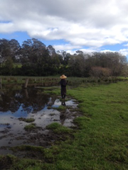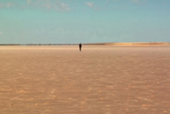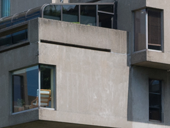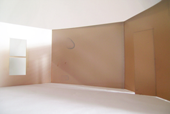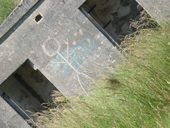Editorial
Welcome to the fourth regular issue of JAR! Over the last three years, we have demonstrated that the journal publication of artistic research and its associated peer-review is possible without overburdening artists and researchers with sets of criteria that can negatively affect the often quite fragile fabrics that are made by and, in turn, support artistic practice.
When we started, it was impossible to imagine the character the project would obtain. Today, I remain struck by the very particular mix that JAR as a whole offers its readers, a mix that is neither planned nor curated but is due to an open submission policy where literally anybody can expose his or her practice as research free of charge – yes, in JAR one is neither invited by a small group of curators or editors nor is one made to pay for the privilege to enter discourse!
In fact, the open submission policy continually produces surprises, since it is impossible to anticipate the type of research that will next appear in an editor’s inbox. Each issue will – I assume – produce a similar effect on you, the reader, who will probably at one point or another have questioned what kind of information, understanding, or knowledge can be taken from a particular piece of research if – as is likely – the practice that is presented does not substantially overlap with one’s own art making. In other words, if academic journals usually have a fairly narrowly defined area of interest where a small number of specialists can advance, issue by issue, both questions and their answers, it may be difficult to perceive how, due to their extreme diversity, the expositions that JAR publishes can inform one another and, finally, you, the reader.
The question of information relates directly to the types of knowledge that are implied when practice is exposed as research. In the foreground, one may see factual information that can directly reference but also more indirectly connect with other research. For example, such an indirect connection can be made between Anders Hultqvist’s ‘Who creates the creator’ – and the limits of interpretation? (JAR0) and Eivind Buene’s Delirious Brahms (in the current issue JAR4), since both in very different ways ask how one engages with classical music repertoire today. Over time we expect these types of connections to surface even more when researchers directly relate to and reference other people’s expositions.
However, looking at the modes of exposition, one may relate ‘Who creates the creator’ more to, say, Laura F. Gibellini’s A Place, Constructed (JAR1), since both use non-linear forms of writing, or, Annie Abrahams’s Trapped to Reveal – On webcam mediated communication and collaboration (JAR2) to Dominic Redfern’s Located Identity: Finding the Mallee (JAR4), both of which voice and develop a concern across a number of artistic projects. While the choice of mode of exposition may simply be instrumental, there is also the sense that it may suggest ways in which artists situate themselves epistemically in a practice.
Such a type of knowledge, which is much more difficult to grasp, provides a reader with an artistic and epistemic orientation that does not only give information but also demonstrates an engagement. This engagement-in-practice can be related even if neither the content nor the form of an exposition suggests proximity. Rather than being presented with a direct reference, this kind of relation may be considered ‘subjective’ since each reader individually is asked to create a coherence across what otherwise may look disjointed.
Through its open submission policy on the back of a very general concern (‘artistic research’), JAR attempts to challenge any one meaning of ‘artistic research’ by moving the emphasis from narrow definitions of ‘discipline’, which regulate what is and what is not possible at any given time, to epistemic engagements in artistic practice in their widest and most diverse form. This challenge is a direct result of JAR’s commitment to publish expositions of practice as research, that is, to follow notions of research as they emerge from artistic practice.
As a result, to cover contested ground JAR has to have multiple identities in which each exposition offers both a relation to others as well as a unique and self-defined epistemic stance, that is, a research practice. This explains why, in order to pose the question of artistic research in sufficient depth, we champion diversity across artistic disciplines, professional backgrounds, and expositional choices. What emerges is a project with unclear boundaries and a surprising degree of individuality brought to the table by each exposition.
At the same time, it is clear that work remains to be done in a number of directions. First, looking at past issues and the rate of submission, the term ‘artistic’ in the journal name seems to discourage some practitioners in more applied fields of practice. From our point of view, if notions of ‘high’ and ‘low’ art are left behind, there is no reason not to expose, for example, design practice as research. Second, as mentioned in a previous editorial, we remain convinced that there are many more ways in which to write using media. We continue to feel that the tension between textual and non-textual modes of presentation can afford more ways of engagement that can critically challenge conventional registers of knowledge. Third, it is questionable whether it has to be the artist personally who needs to expose his or her practice as research. While in previous issues this has mostly been the case, it seems to us that novel, expositional ways of engaging with art criticism and the work of others need to be imagined, requiring potentially more fictional narratives or those that also expose the practice of art critical writing as research.
Even with what we have already published in JAR, the sense is that each individual exposition is to some degree singular, requiring a certain level of involvement that gives it time and space to work before it is met with criticism. There is no framework provided – for example, a ‘theme’ – that would set the scene and provide a (critical) context. The question of how a contribution is read, heard, seen, or navigated becomes important. My sense is that many JAR readers engage even with material that on first sight seems to be unusual to them; my experience is that this approach is rewarding since new thoughts and new possibility often enter from surprising directions.
This fourth issue offers six different opportunities for surprise. In Mapping a Modern Diegesis: Terre des Hommes and Robert Altman's Quintet, Paul Landon investigates the multi-layered site of different, but not independent, past futures. Don Asker and Helen Herbertson produce in Latitudinal Conversations a complex fabric of differences and interrelations that is able to contain reflectively a very physical approach to research. Eivind Buene in Delirious Brahms challenges the conventional setting for chamber music by developing a new type of performance that allows for advancing contemporary concerns within a classical repertoire. In Located Identity: Finding the Mallee, Dominic Redfern traces how in successive works that approached the Mallee region of south-eastern Australia his practice was made to respond and transform. Pamela Salen, in The Photogram as a Domestic Diary, opens up ways in which through artistic practice the particular experiential quality that we call ‘home’ can be remembered not only as a fixture of a past but also as the continuing transformation of that past in a present. In Towards a Non-Identity Art, Rory Harron describes ‘non-identity art’ as an impossible object that by acting as a reference informs his research into the possibility of egalitarian art.
From next year onwards, we aim to publish JAR three times a year – around the end of February, May, and November. It is still best for us to receive submissions on an ongoing basis, but we will continue to publish deadlines as we approach the end of a submission period. The deadline for JAR6 is 28 February 2014.
The diversity that JAR seeks is also built into the Research Catalogue, provided by the Society for Artistic Research, which forms the technical backbone of JAR. I am happy to announce that with Ruukku: Studies in Artistic Research the Research Catalogue now serves a second journal in the field. Ruukku’s first issue is on the theme of ‘Experience and Experimentality in Artistic Research’.
Michael Schwab
Editor-in-Chief


